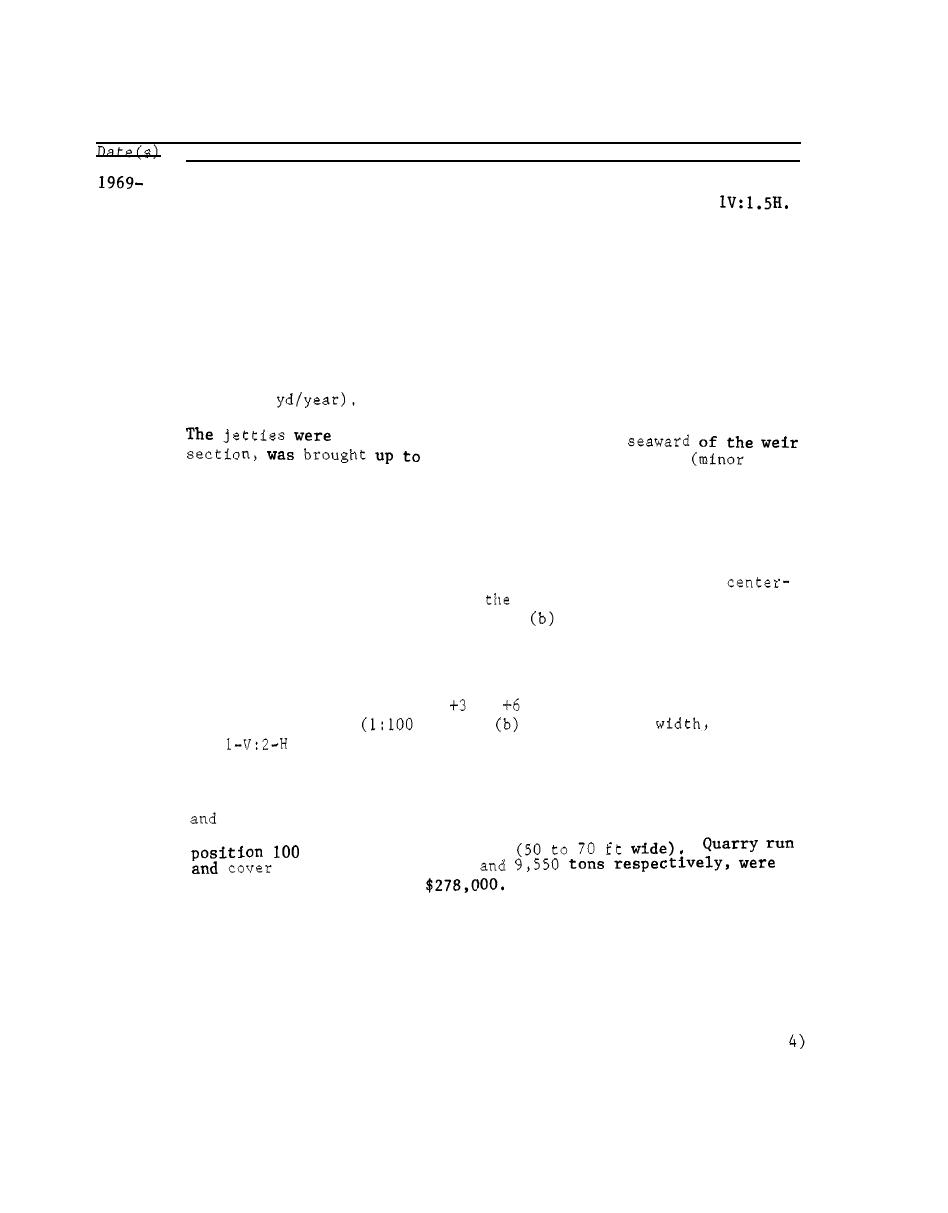
Construction and Rehabilitation History
placed along the weir axis. The crown elevation was still at
-0.5 ft mlw with a crown width of 1 ft and side slopes of
0
1970
(Cont)
The remaining, intact section of the weir was modified with an
identical rubble-mound section except that the 3-ton weir stone was
not placed, and the crown width was 6 ft. The total cost of the
repairs was 3,000.
1972
A S A M report (prepared for the Coastal Engineering Research Center
(CERC)) on the weir jetty indicated that the east jetty was too
short since westward littoral drift was entering the channel during
flood tide and being deposited within the inlet. Also, the eastward
littoral drift appeared to be much smaller than expected (perhaps
50,000 cu
1977
rehabilitated. The west jetty,
the previous design geometry
changes in cover stone), and the east jetty was modified with a
rubble-mound groin at its landward end and toe protection at its
seaward end. A survey of the west jetty, seaward of the weir sec-
tion, shows typical elevations 1 to 3 ft below the design eleva-
tions. The seaward ends of the trunk and head sections were from
4 to 8 ft below the design elevations. Water depths around the east
jetty head were up to 32 ft deep within 100 ft of the jetty
line. Cover stone was placed on
west jetty as follows:
( ) 3 to 6 tons on the trunk section,
3 to 1 1 tons on the tran-
a
sition section and seaward 100 ft of the trunk section, and
(c) 11 to 15 tons on the head section. A 300-ft-long groin was
placed at the landward end of, and perpendicular to, the east jetty
rubble-mound section. The groin design had (a) a crown elevation
to
ft mlw from its seaward end to
that varied uniformally from
slope),
a 10-ft crown
the jetty function
side slopes, (d) 3- to 6-ton cover stone, and
(c)
(e) 1,000-lb maximum core stone. The east jetty toe protection con-
sisted of a 3-ft-thick mat of quarry run stone (less than 1,000-lb
pieces) placed at the seaward end, along 150 ft of the channel side
extending 150 deg around the head section. The width of the mat
extended from the -6 ft mlw contour on the jetty side slope to a
ft from the jetty axis
stone, weighing 4,650
placed at a total cost Of
A reconnaissance report on East Pass Channel indicated that shoaling
1982
of the channel at the entrance and adjacent to the deposition basin
had been a problem for several years. The entrance channel shoaling
was primarily attributed to natural bypassing of littoral material
around the eastern jetty, and this indicated an inadequate design,
(Continued)
(Sheet 3 of
97



 Previous Page
Previous Page
